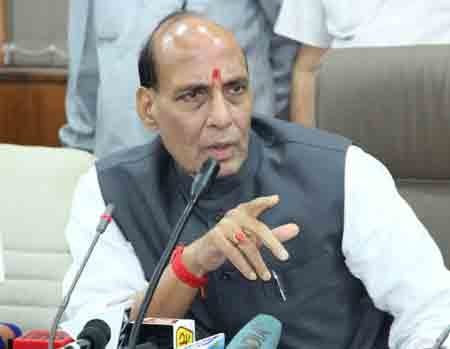New Delhi, November 7, 2025 —
In a strategic move signaling the Bharatiya Janata Party’s next organizational chapter, Defence Minister Rajnath Singh confirmed that the party will appoint a new national president after the Bihar assembly elections, effectively marking the end of JP Nadda’s tenure.
The announcement, made during a campaign stop in Bihar, comes as the ruling party gears up for a series of crucial state polls in 2026 — a cycle that will test its grassroots strength and leadership adaptability.
🔸 Strategic Timing for a Smooth Transition
Party insiders have long anticipated a leadership change after the Bihar polls, citing the BJP’s tradition of maintaining focus during active campaigns before announcing major internal shifts.
According to senior functionaries, the decision to hold off until after the elections reflects Prime Minister Narendra Modi’s preference for “organizational continuity” during critical political phases.
“This is a procedural transition, not a disruption,” a BJP source said. “The new leadership will carry forward the same ideological vision with renewed energy.”
🔸 Nadda’s Tenure Nears End
JP Nadda, who took over the reins from Amit Shah in 2020, guided the party through major state elections, the 2024 Lok Sabha campaign, and the ongoing expansion efforts in southern and eastern India.
His term officially concludes this year, and the new appointment is expected to align BJP’s central leadership with its next electoral roadmap, especially in states like Uttar Pradesh, Gujarat, and West Bengal — all scheduled for polls in 2026.
🔸 Rajnath Singh’s Statement: Unity and Readiness
Addressing reporters, Singh said:
“The BJP is a cadre-based party with strong democratic traditions. After the Bihar elections, the new party president will be announced. Our focus now is entirely on ensuring a decisive victory in Bihar.”
His remarks were widely interpreted as confirmation of an upcoming leadership reshuffle designed to prepare the party for future state-level challenges.
🔸 What It Means for 2026 and Beyond
Analysts see this transition as part of a wider organizational reboot, mirroring the BJP’s long-term strategy of refreshing its leadership before major electoral phases.
Political observers note that the change is likely to bring younger or regional leaders into prominence, balancing the party’s national command with a stronger local network.
“A new president allows the BJP to re-energize its base and fine-tune its outreach, especially among younger voters,” political analyst Meera Shastri told The Economic Lens.
🔸 Possible Successors: The Watch Begins
While no names have been confirmed, speculation is already rife within Delhi’s political corridors. Potential contenders may include current general secretaries and key regional leaders seen as both organizationally disciplined and electorally sharp.
The BJP’s parliamentary board — chaired by Prime Minister Modi and including Rajnath Singh, Amit Shah, and Nadda — will make the final decision post-election results.
🔸 Bottom Line
Rajnath Singh’s confirmation has set the stage for one of the BJP’s most significant internal transitions since 2019. With Bihar’s verdict expected to shape the timing and tone of the announcement, the leadership shift will likely define the party’s next phase — one focused on consolidation, renewal, and strategic continuity.
As one senior leader put it:
“This isn’t just a new name — it’s the next step in the BJP’s evolution.”
















